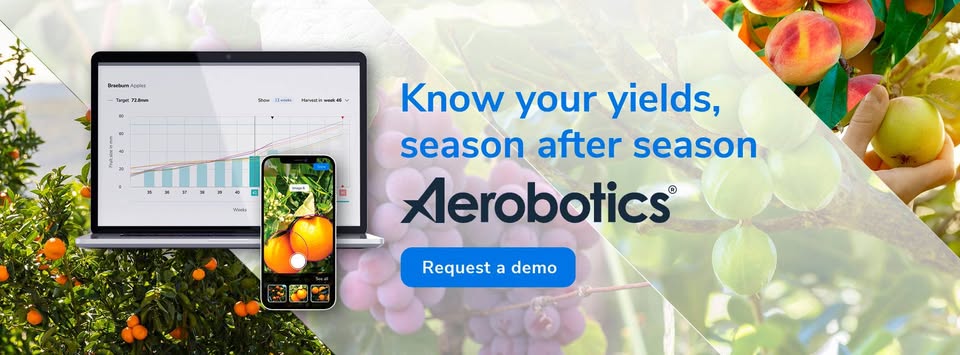Physical Address
304 North Cardinal St.
Dorchester Center, MA 02124
Physical Address
304 North Cardinal St.
Dorchester Center, MA 02124
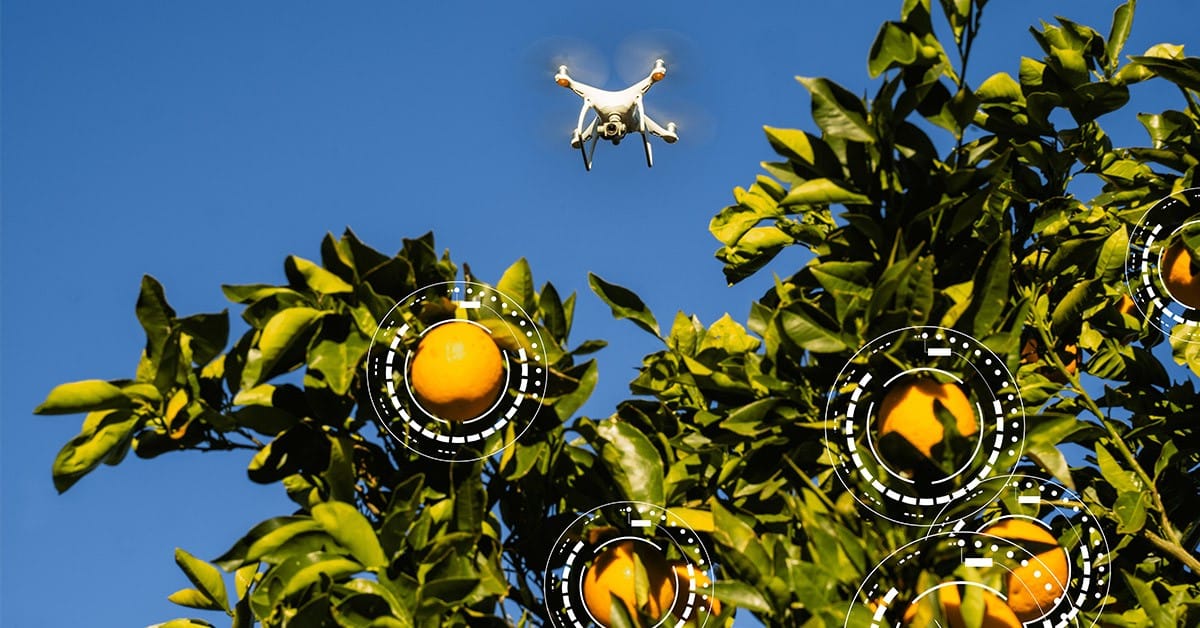
Agriculture in Africa is such a paradox. The continent boasts of some of the world’s most fertile land, a young, vibrant and dynamic population yet on the other spectrum agriculture is marred with many challenges as farmers continue to struggle with low yields, climate variability, pest & disease infestations and limited access to reliable data.
This is where precision agriculture comes into the mix – powered with drones, artificial intelligence (AI), and advanced data analytics. Among the leaders in this movement is Aerobotics, a South African agri-tech company that has become synonymous with drone-based farm monitoring and crop intelligence.
To dive deeper into Aerobotics’ impact, we reached out to Ken Treloar, who works in client success and account management at Aerobotics to get his perspective on how this technology is reshaping farming in Africa and beyond. Ken helps farmers and agribusinesses integrate drone and AI-backed tools into their operations bridging the gap between technology and practical farming outcomes, ensuring tools like Aerobatics create real value on the ground for farmers and consultants.
His focus this season and the next will be in supporting the European and Latin American expansion efforts. Beyond this role, he is also an author and content creator, specialising in drone-based technologies and precision farming.
In the orchards of South Africa and far beyond, farmers are starting to see their crops in a completely new way. Founded in Cape Town, Aerobotics has become a global leader in precision agriculture giving farmers a “bird’s eye view” of their crops by blending drone technology, satellite imagery, and AI-powered analytics.
The idea is simple but powerful: capture high-resolution images of orchards and fields, then process them through advanced machine learning to uncover what the human eye can’t yet see—the early signs of pests, disease, water stress, or nutrient deficiencies. By the time most farmers would normally spot a problem, Aerobotics would have already flagged it. Fantastic stuff, isn’t it?
Farmers access this information through a mobile app, enabling smarter decisions about irrigation, spraying, and harvesting. To date, Aerobotics has expanded from Africa to the U.S., Europe, and other regions, analyzing millions of trees and crops worldwide, making it a global leader in precision agriculture for orchards and vineyards.
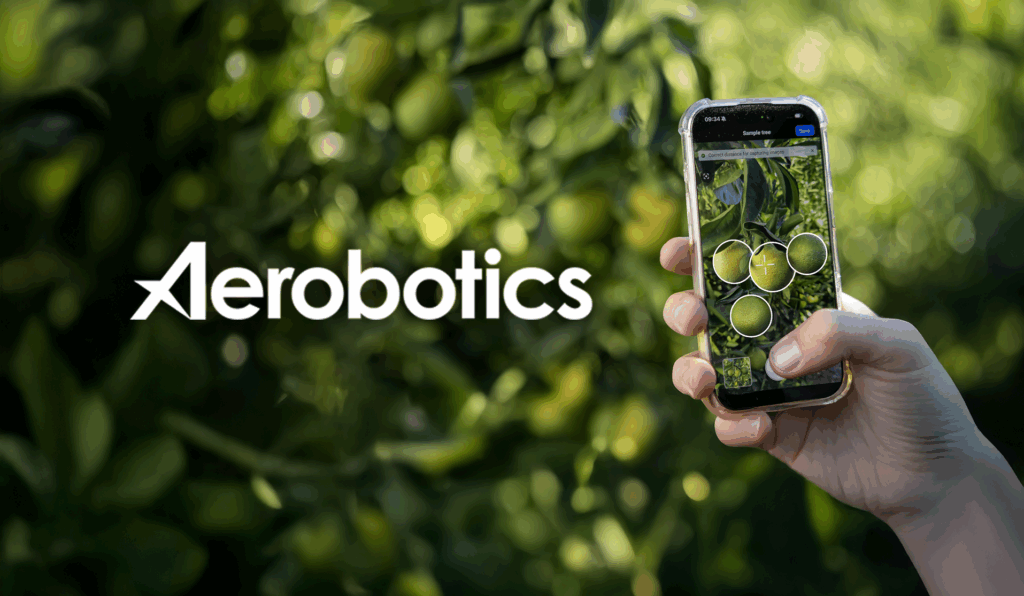
What sets Aerobotics apart from other agri-tech solutions you’ve seen globally? Ken speaks on what sets Aerobotics apart from other agri-tech solutions that are around and he had this to share:
Two things: focus and accuracy.Many agri-tech platforms try to be broad. Aerobotics is laser-focused on perennial orchard and vineyard crops specifically. Crops like citrus, macadamias, avocados, apples, pears, table grapes, pecans, pomegranates, kiwi, and so forth.
That specialisation means our tools are tailored, accurate, and practical. Second, our AI is trained on millions and millions of trees and fruit, giving us an unmatched mass of data, accuracy in fruit sizing, yield estimation, and health analytics – depending on the product suite.
Furthermore, there’s a low barrier to entry for smaller entities, or those wanting to test the waters. Also it is coming in with the ability to scale with large expansive enterprises – like multinational organisations spanning several countries – Aerobotics has a level of flexibility and utility in its solutions that are hard to match.
Africa’s agriculture sector is moving with time and rapidly evolving with the global shift towards “Agriculture 4.0” which is no longer a future dream but an urgent necessity. Agriculture 4.0 refers to the use of Internet of Things (IoT), Big Data, Artificial Intelligence and Robotics to enlarge, speed up, and improve the efficiency of activities that affect the entire production chain and in this case, data, drones, and AI guide farming decisions.
With Agriculture 4.0, it means proper cost management and following through all the farming process, proper resource allocation and avoiding unnecessary waste of resources such as water, chemicals, fertilisers, etc. It is also particularly very important in supply chain management along the farming value chain.
From smallholder farmers in Zimbabwe to large-scale citrus growers in South Africa and the rest of the world access to actionable crop intelligence can signal the difference between profit and loss.
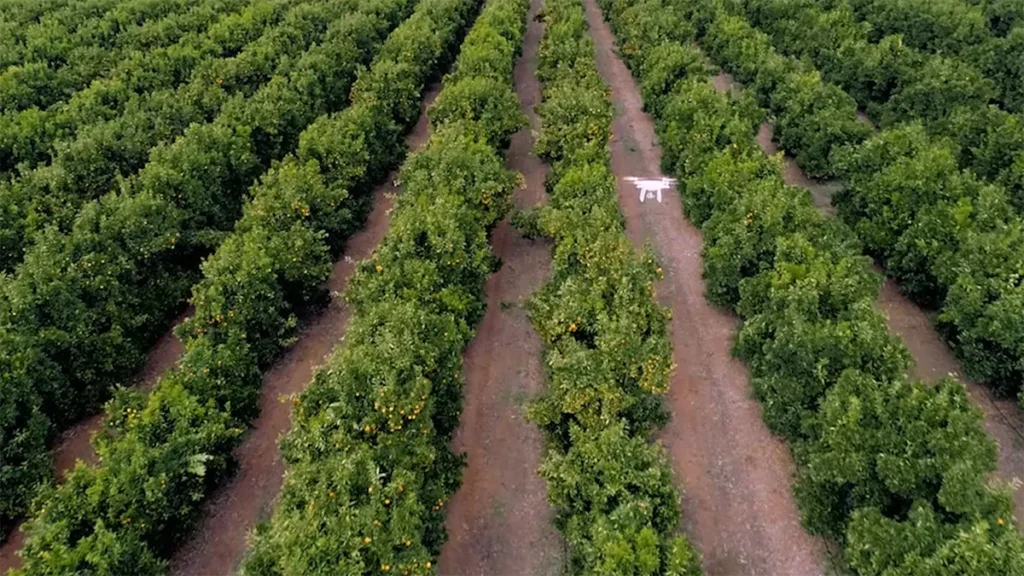
When asked how critical technologies like Aerobotics are in shaping the future of African agriculture, Ken emphasized their indispensable role:
“It’s essential. African agriculture faces unique pressures – climate variability, labour costs, global market demands, instability. Technology like the Aerobotics solutions provide farmers with foresight, helping them to act early, reduce waste, and optimize production.
Decisions are data-backed, and the numbers are at your finger-tips when plans need to change. Whether tree counts for asset management… yield estimates per cultivar, orchard, or farming entity… or fruit size distributions and fruit grade information needed for shifting export programs…
The Aerobotics solutions close the gap between what’s on the ground and what’s in your database of information used to make the right calls.
Without this kind of digital backbone, Africa risks falling behind global standards of traceability, efficiency, and sustainability. And on the flipside, those embracing and utilising these cutting edge technologies are leapfrogging others on the continent that are more hesitant to leverage available technologies.”
Ken’s insight highlights an important truth: data becoming the new soil – on which the farms will have to grow on. Through harnessing precise and data driven insights; farmers can predict & anticipate challenges and act promptly, aligning their operations with the international export standards.
Digital agriculture solutions like Aerobotics are not just tools but catalysts especially in a continent where technology adoption often leapfrogs traditional stages of development. The solution is showcasing Africa’s ability to merge innovation with its greatest asset – the land.
Traditionally, farmers relied on manual scouting to detect problems in the field, a time-consuming and not so efficient process often associated with some errors.
Instead of relying on gut feel or delayed scouting reports, farmers get objective, orchard-level insights that are updated regularly and backed by data.
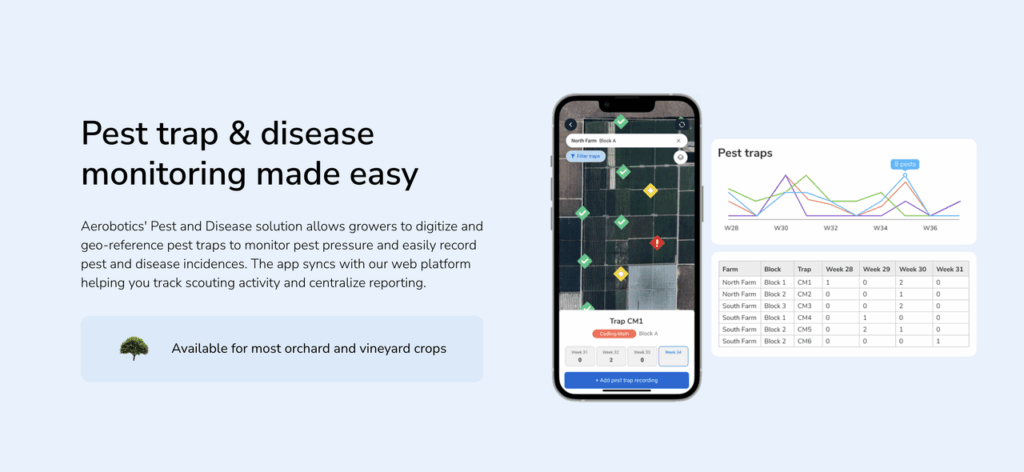
Aerobotics’ drone scans and AI tools highlight issues before they become visible to the human eye – whether that’s water stress, nutrient deficiencies, pest damage, or canopy gaps. With these insights, farmers can:
On a day-to-day level, this changes how farmers walk their orchards, deploy teams, and allocate budgets. The difference is moving from reactive farming (waiting for problems to show up) to proactive farming, where decisions are data-driven and measures taken are largely preventative.
The result is not only sustainable yields and a reduction in input costs, but also the confidence of knowing decisions are rooted in measurable evidence. For farmers competing in global markets, that shift from intuition to intelligence is becoming a decisive advantage.
From time immemorial, agricultural insurance claims have been associated with lots of disputes and delays often leaving farmers without compensation. Aerobatics is coming to the rescue with their actionable insights and offers allowing insurers to verify the losses with high accuracy essentially building trust between farmers and insurers while reducing risk exposure for both parties.
Insurance claims are often slowed by lack of evidence or disputes about damage. Aerobotics changes that by providing independent, time-stamped, and objective data at tree level.
Every drone scan builds a verifiable record of orchard condition before and after a damaging event – whether it’s hail, frost, drought, or pest outbreak.
With Aerobotics Crop Insurance Services (ACIS), we go further by digitising and simplifying the entire process:
Accurate insurable hectares: Using drone imagery and AI, we distinguish between producing and non-producing plants on an individual tree basis. Farmers only pay premiums on productive acreage, avoiding overestimation and rejected claims.
Simplified verification: Instead of repeated manual checks, all data is captured once and stored in a digital platform. This means insurers and farmers have a common, trusted dataset.
Streamlined claims: When damage occurs, insurers can immediately reference the verified dataset, reducing disputes and ensuring faster payouts.
Policy optimisation: Aerobotics can run a five-year “look-back” analysis, showing farmers what coverage they would have had historically. This helps them adjust policies with confidence for future seasons.

Ken Treolar shares one case study for insurance with Aerobotics:
A powerful example comes from Farmers Investment Corporation (FICO), one of the largest pecan producers in Arizona. Managing 8,100 acres (a little over 3,200 hectare) they previously faced endless mapping, manual verification, and paperwork to prepare insurance policies.
By adopting Aerobotics, all of this was digitised and streamlined. As their COO described: “With Aerobotics, the drone flying and certifying the acres just takes the guesswork out. Everything’s digitised, cloud-based, and it makes it a lot easier.”
The result is a new model of data-backed, transparent crop insurance that benefits both sides. Farmers gain quicker, fairer access to payouts and healthier cashflow when disaster strikes. Insurers reduce fraud, disputes, and inefficiencies. Together, this builds resilience and trust across the agricultural value chain.
At the moment ACIS is only available in the US. There is potential to expand offerings into other regions – although this decision has by no means been finalized.
Currently, Aerobotics clients in Africa and Australia for example, are utilizing the standard set of drone data outputs to simply back-up their insurance claim procedures (inventory records, loss figures, evidence based data) with high-integrity information they can rely on.
Despite its promise, precision agriculture in Africa faces many hurdles that include but not limited to:
Cost of Equipment & Services – Many smallholder farmers operate on thin margins that rarely allow them to invest in the right equipment and services.
Digital Literacy – the ability to find, assess, produce, and communicate information critically and confidently using digital technologies is a challenge with most smallholder farmers.
Infrastructure Gaps – Access to power, mobile and internet connectivity also remains an issue in most rural areas and farming areas.
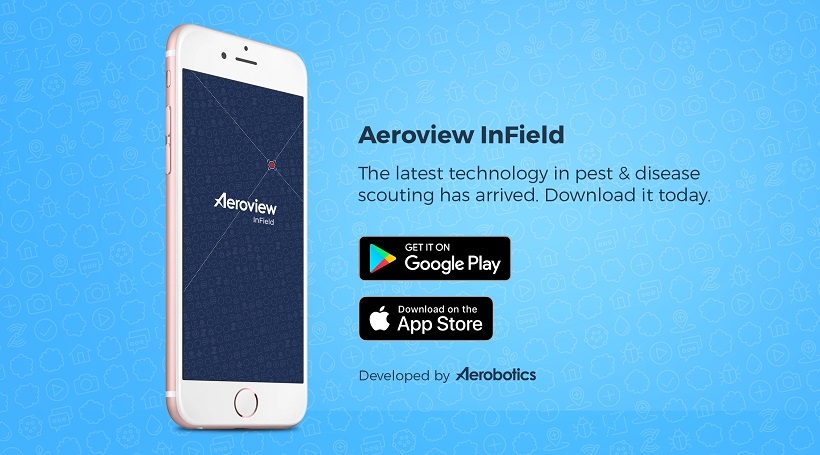
Bridging this gap will require partnerships, training programs, and scalable pricing models. Ken shares his thoughts on the biggest challenges farmers face in adopting Aerobotics or similar technologies, especially smallholder farmers:
“Access and affordability are the biggest hurdles. Some farmers lack internet connectivity, smartphones, or the budget to adopt new tools. While hardware and service provider (AKA pilot) access in terms of drone surveys are obvious challenges in certain territories.
Training is also critical – technology is only valuable if farmers know how to use it. At Aerobotics, we address these barriers by building simple interfaces, offering scalable pricing, and supporting adoption through strong local partnerships, and premium client support systems.”
Farming has never been this unpredictable and climate change is the new reality. Climate change is having devastating effects on agriculture in Africa through increased frequency of droughts and floods, erratic rainfall, increasing temperatures all leading to increased food insecurity, economic losses and increased cost of production.
According to the Intergovernmental Panel on Climate Change 2007 report a comprehensive assessment on the expected effects of climate change on agriculture in the Africa region was provided. It estimated that Africa will be the most vulnerable to climate change globally, owing to the multiple stresses of poor infrastructure, poverty and governance.
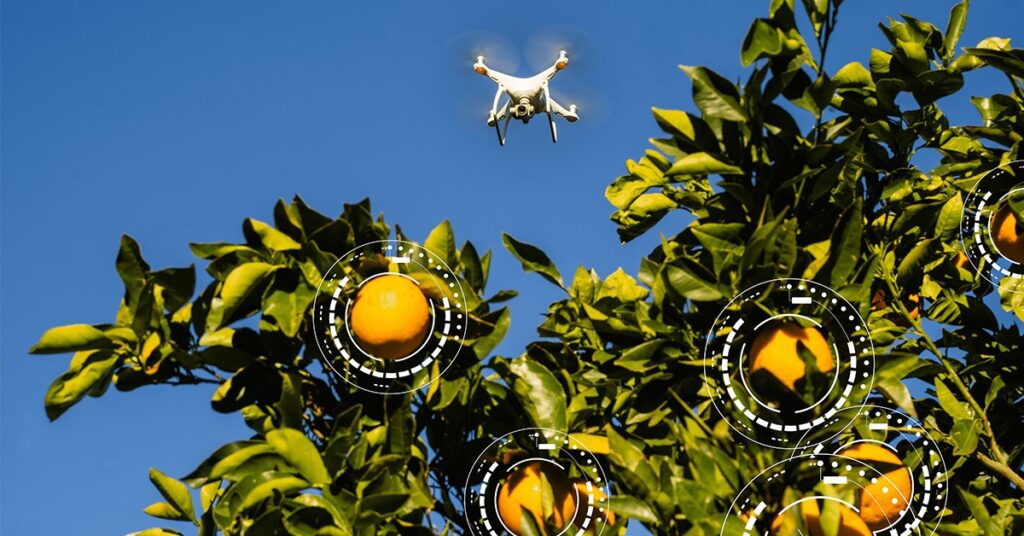
The report also reported that temperatures are likely to increase by between 1.5-4ºc in this century. Projections on yield reduction show a drop of up to 50% and crop revenue is forecast to fall by as much as 90% by 2100.
Sustainable farming is becoming the norm and is one way of countering the negative effects of climate change.
Speaking on how Aerobotics can help farmers adapt to climate variability and promote more sustainable farming practices, Ken had this to say:
By providing early warnings. Our drone-based tools detect stress before it’s visible, helping farmers respond to water shortages, pest outbreaks, or disease pressure in time to reduce losses. On sustainability, our data allows for precision input use – less fertiliser, less pesticide, less wasted water. That saves costs, but it also protects soils and ecosystems.
Fruit sizing adds another dimension to resilience. By tracking fruit growth throughout the season, Aerobotics helps farmers understand how climatic factors like heat stress or uneven rainfall are impacting crop development. This insight allows for earlier adjustments to irrigation, nutrition, and harvest planning.
The result is not only more consistent pack outs for export markets, but also a more efficient use of inputs in response to shifting climate conditions. This positions the technology not just as a profit tool, but also as a sustainability enabler.
It is important to note that technology alone won’t transform agriculture. For Aerobotics to reach scale, it will require collaboration with the governments, insurers & banks, agribusinesses & NGOs, drone service providers and farmers. Ken expressed his view on partnerships for Aerobatics and how they could transform agriculture in Africa.
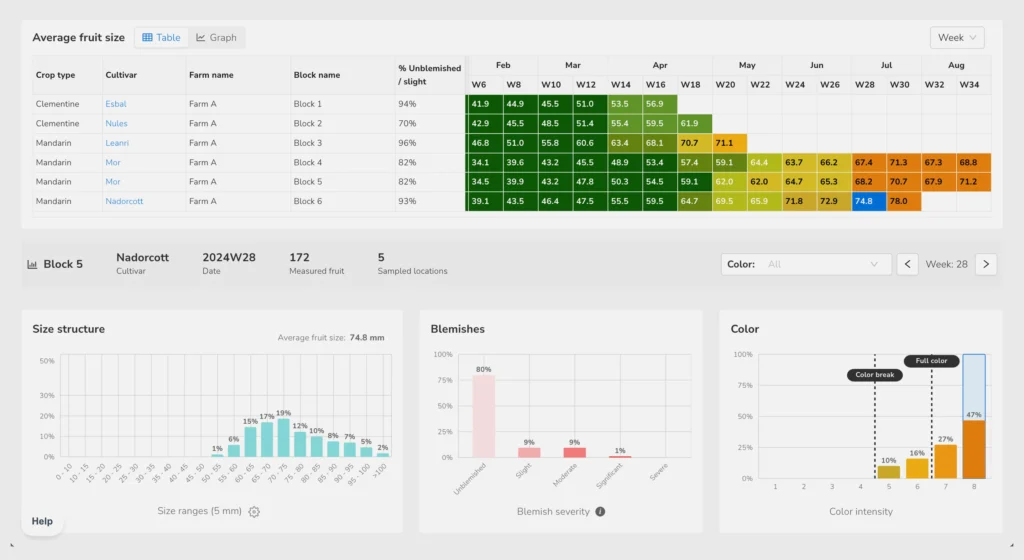
These strategic partnerships are how technology scales impact across entire regions, not only individual farms. We actually have dedicated staff actively working on seeking out these kinds of initiatives – well versed in leveraging global partnerships. It’s like that African proverb, “If you want to go fast, go alone. But if you want to go far, go together.”
The next coming years are promising, with the increasing investment in agritech, Aerobatics is likely headed somewhere great. To get a glimpse of the future we had to ask from the right expert, Ken:
We expect to expand from strongholds like South Africa and Zimbabwe into broader North and East Africa. Egypt, Morocco, and Botswana are already growing markets for us.
In ten years, I see Aerobotics as the benchmark for high-precision orchard monitoring across the continent – integrated into everyday farming, insurance, and export processes, powering Africa’s place in global agricultural trade.
If Africa wants to unlock its full farming potential, precision agriculture is essential.Aerobotics goes beyond just drones and data. It represents a shift toward future-proof farming in Africa, where technology is enabling farmers to be more productive, sustainable, and resilient in the face of uncertainty.
